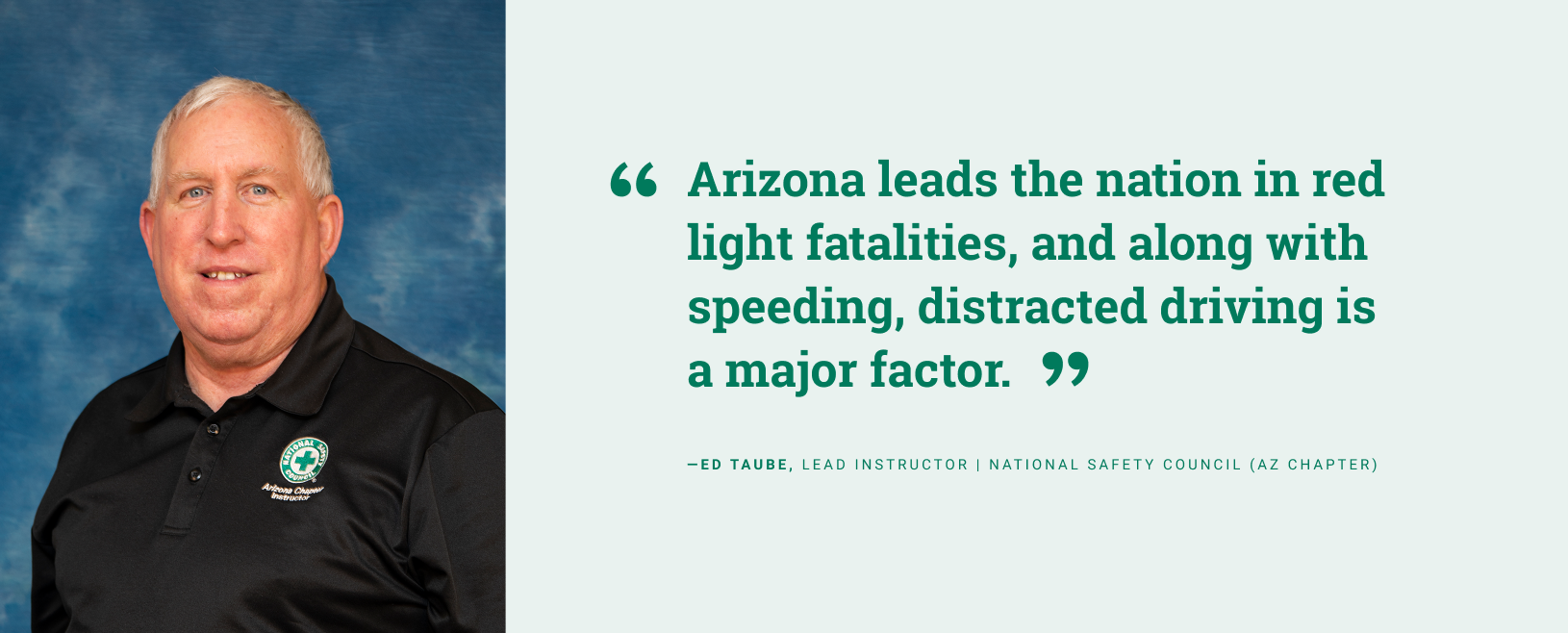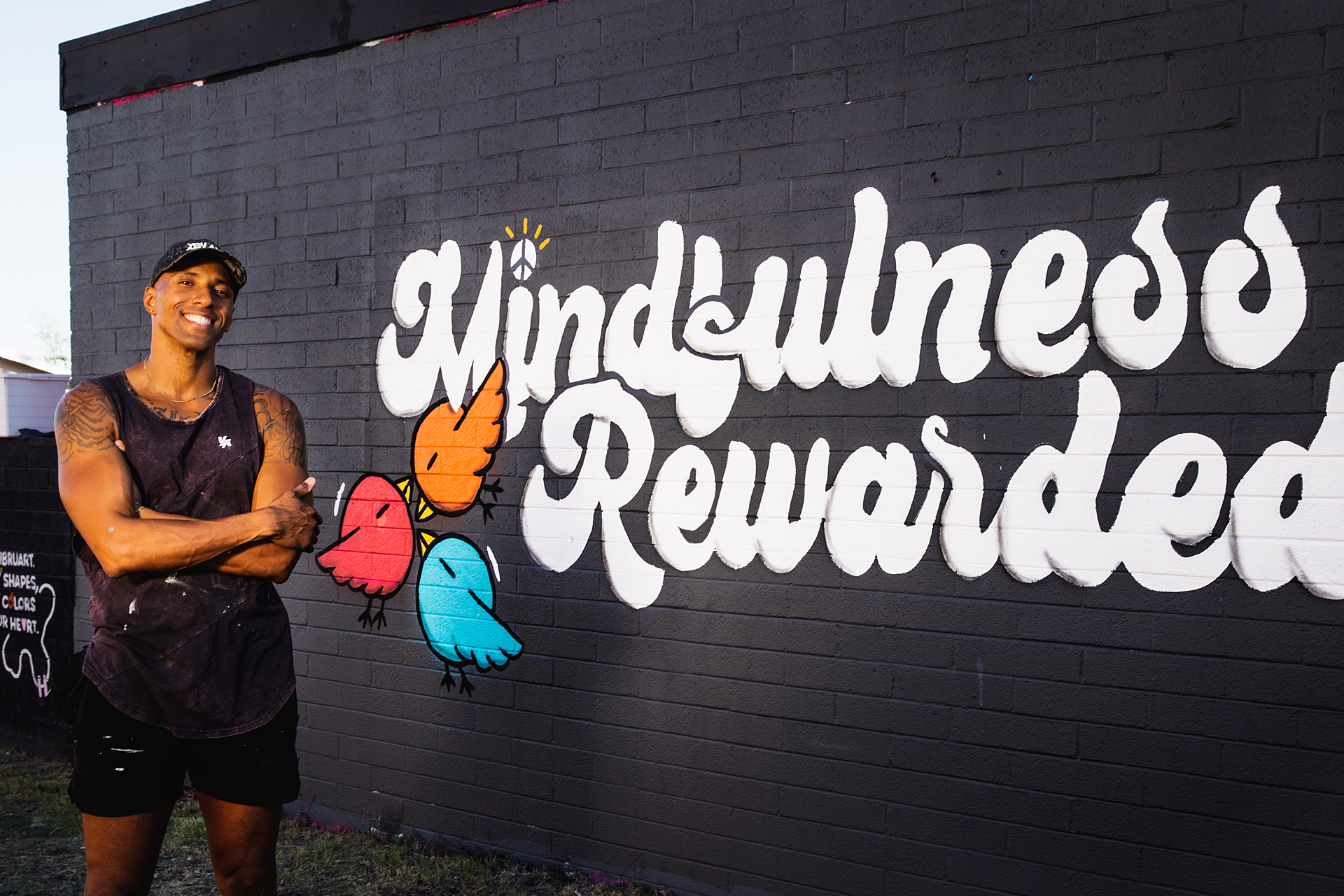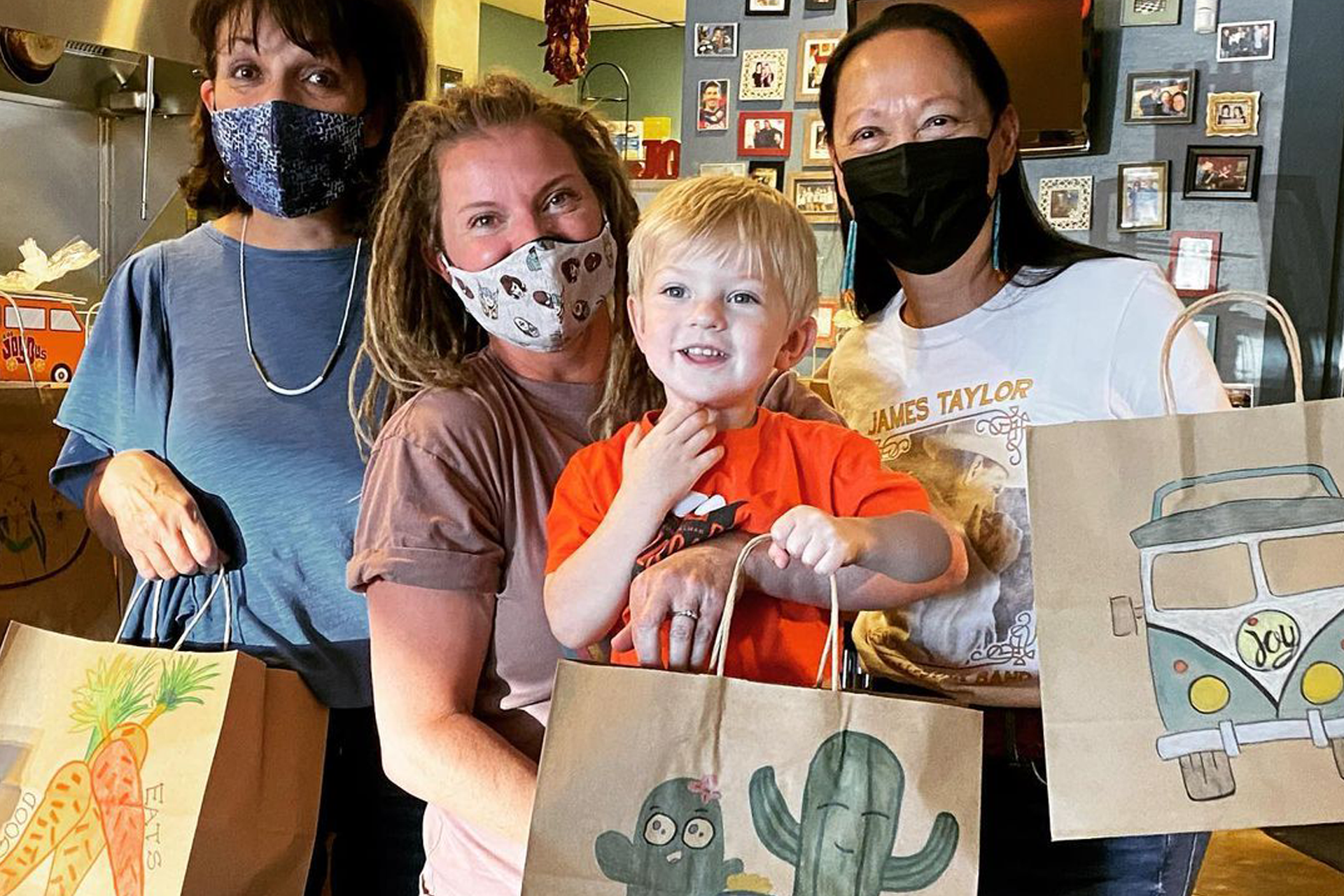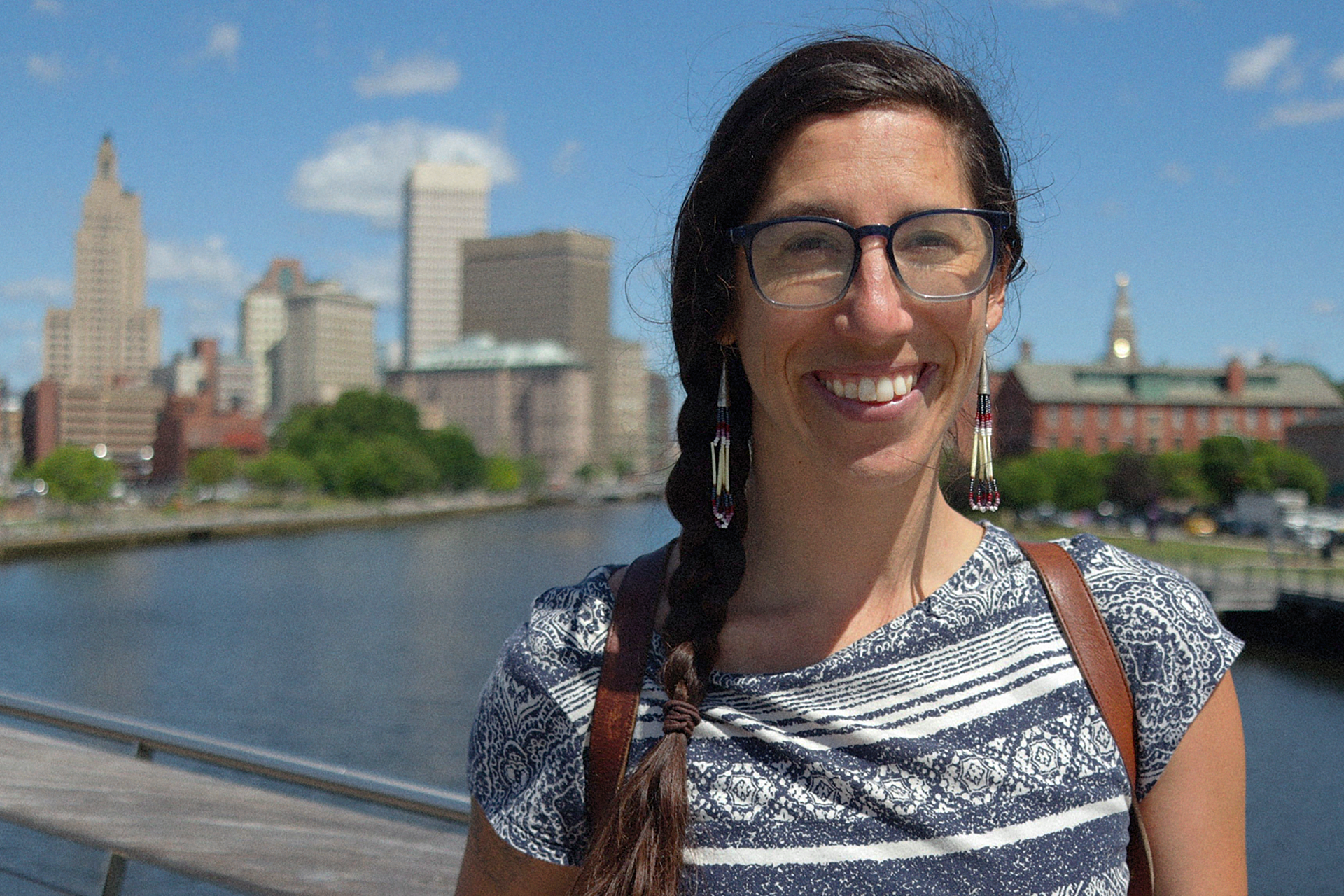Distraction-free driving: spotlight on Arizona’s National Safety Council
April 21, 2022
Distracted Driving Awareness Month is recognized in April to raise public knowledge of the issue and dangers of distracted driving. For our team at HiRoad, driving distraction-free is a key element of our app experience that can reward drivers for being focused on the road.
But what gets us so distracted behind the wheel? We recently met with lead instructor of the
Arizona Chapter of the National Safety Council, Ed Taube, to get some answers to this question and discuss the importance of raising awareness beyond the month of April.
Distracted driving insights from the National Safety Council in Arizona
Q: Tell us a little bit about yourself. What brought you to the role you have at the Arizona Chapter of National Safety Council?
A: About ten years ago, the [Arizona Chapter National Safety Council] was awarded the contract to administer the state Traffic Survival School program. Our chapter adapted that training to meet the requirements for the state of Arizona by being more behavior-based. The curriculum explores why we choose our driving behaviors and asks other questions such as what are the consequences of our action, and how bad do the consequences have to be before you decide to make a change?
I originally started with the Safety Council monitoring courses, which allowed me to be trained and observe other TSS instructors on how effective they are teaching the class.
Eventually, the Safety Council approached me and offered me the position, so I went from an independent contractor to a full-time employee, and now teach 21 different courses for the organization in Arizona.
Q: Distracted driving is a prominent issue across the country. Why is distracted-free driving important everywhere, but specifically Arizona?
A: That's a great question. Why is distracted driving an issue, especially in Arizona? Let's start with that. Arizona leads the nation in red light fatalities, and along with speeding, distracted driving is a major factor. The consequences of not paying attention to your task, which is driving safely, could be dire. Not only for you, but maybe for one of your children. We have an activity in class where we ask participants to list five people that are important to them. Why? Because we want them to consider the other people in their lives who would be affected if something happened to them while driving and they didn’t come home.
How would you be affected if something happened to one of them? Right out of the gate, we try to personalize the training and provoke people’s thoughts because that’s what's really critical to learning. If we're going to teach people to change their behaviors and make different choices, we can tell them “what”, and “how”—but that's not going to stick until they understand “why”.
It’s the “why” that ultimately leads to driving safely.
A lot of the time, we're not focused on safe driving. We're focused on, “Hey, we're late, we've got to get there” and thinking about seven different things—multitasking—and that's where the distraction element comes in. And as we can probably guess, the biggest distraction is the cell phone but that's still not the only distraction. There is programming the GPS, eating a sandwich, drinking a soda or whatever it is we’re doing.
Anything that takes our hands off the wheel, eyes off the road or our brain off of the task is a distraction. The average text takes only four seconds to read, but four seconds at 55 miles an hour at 80 feet per second is 320 feet. That’s the size of a football field that you would effectively be driving blind while reading a text. If we do something that distracts us, we don't recognize the hazard and we have even less time to react to it when we do see it.
It may take three or four seconds to read that text from a friend, but those three or four seconds could cause you to not have time to react to a car that suddenly stopped in front of you or a person that stepped out into the street.
Those distracting elements are essential to collision prevention. We tell people all the time, “slow down, add more space”, and that's the basis of our safety training. If there's nothing there, you can't hit it. So if you have a football field between you and the car in front of you, you can't hit it—unless you're distracted.
Q: What is one piece of advice that you would give to minimize distracted driving?
A: There are some things that you can do proactively to eliminate some of those distractions. And once again, if we can start to zero in a little bit more specifically on the cell phone, even though that’s not the only distraction.
It's easy for me to say, you know, “Put the phone away and drive” or tell you “It can wait”, “Put the phone away”, or “Nothing's that important”. But reading that one message could have consequences if you read it. So how about if before we do anything, we tell everybody in our world, our family, our friends, our employers, our customers, that we have a commitment to driving safely, not only for ourselves, but for you and your family.
And to do that, I'm going to make a commitment that I will not answer my phone. If you call me while I'm driving. I will not respond to a text and email, an Instagram or any other message. I'm going to respond as soon as it's safe for me to do that—out of traffic, parked, with the engine off.
So if we take away the expectation of the immediate reply, doesn't that relieve a lot of pressure? When you hear the notification tone on your phone, you're immediately wondering “Who is it? Is it important? I have to respond!”
And remember, it's not just cell phones, it’s eating, GPS, Bluetooth, reaching for things, it's your kids. The list goes on.
Q: What are some initiatives or goals that the ACNSC has now and in the future that will help contribute to safer roads in Arizona?
A: Absolutely. We have a program, and it’s “Distracted Driving Affected Me”, where there's some testimonials from people that have lost loved ones to distracted drivers. It's a media campaign that's on TV, radio, billboards, and more. We've worked with the Arizona Governor's Office of Highway Safety and Local Broadcasters Association to get this message out. It's really important to raise awareness and educate folks. We don't want to guilt people—we want to make them think, and the way we can do that is to show you the potential consequences.
The information in this article was obtained from various sources not associated with HiRoad®. While we believe it to be reliable and accurate, we do not warrant the accuracy or reliability of the information. HiRoad is not responsible for, and does not endorse or approve, either implicitly or explicitly, the content of any third party sites that might be hyperlinked from this page. The information is not intended to replace manuals, instructions or information provided by a manufacturer or the advice of a qualified professional, or to affect coverage under any applicable insurance policy. These suggestions are not a complete list of every loss control measure. HiRoad makes no guarantees of results from use of this information.Stay on the path
Get HiRoad in your inbox
Share your email to get the latest about our community of mindful drivers.



